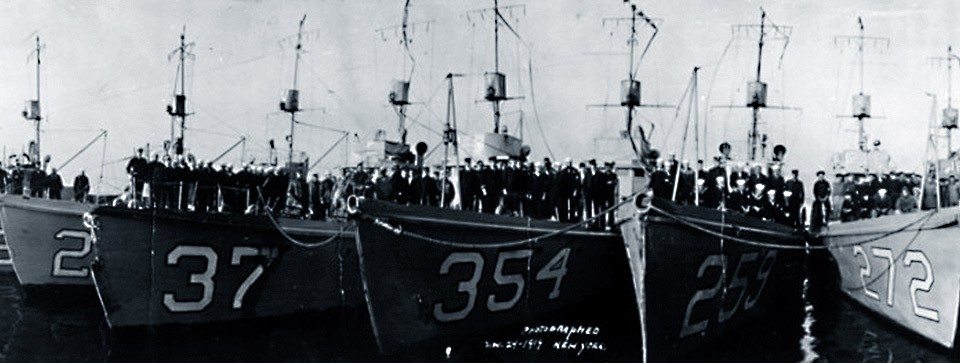
Submarine Chasers
Submarine Chasers
Designed as anti-submarine warfare tools against German U-boats, 120 submarine chasers served on the east coast of the U.S. and in Europe during the World War I. The chasers were small, roughly 110 feet in length and with 85 tons displacement. Commanding and manning the vessels were undergraduates from Harvard, Princeton, and Yale, and other American universities who had joined the Naval Reserves. These officers did not have seagoing experience but took these craft for service overseas. In May 1918, the first U.S. submarine chasers arrived in Ireland. Submarine chasers also were based out of the Azores; Plymouth, England; Brest, France; Gibraltar; and at Corfu, Greece. Captain Charles P. Nelson commanded the submarine chasers onboard USS Leonidas in Greek waters. On October 2, 1918, a squadron of 11 submarine chasers screened the British-French-Italian naval forces during the Second Battle of Durazzo, an Austro-Hungary port facility. The operation was to stop the supplies to the Bulgarians. The attackers hit enemy ships and warehouses at the port. During the Allied bombardment, the submarine chasers destroyed mines that threatened the bombarding ships and drove off an Austrian submarine trying to attack the Allied fleet. For the German U-boats trying to get back to Germany in vain, the chasers were also a deterrent. While in the mid-Atlantic on October 9, 1918, SC-219 was refueling alongside USS Chestnut Hill (ID# 2526) when she suffered a gasoline explosion in her radio room. Set afire by the blast, the submarine chaser sank in less than two hours. Four sailors lost their lives with eight injured. Chief Gunner's Mate Oscar Schmidt, Jr., received the Medal of Honor for rescuing SC-219 survivors.
Image: NH 48928: Submarine Chasers docked at New York City, New York, November 24, 1919. U.S. Naval History and Heritage Command Photograph.



